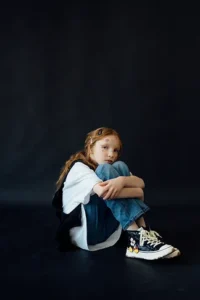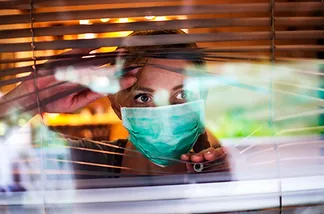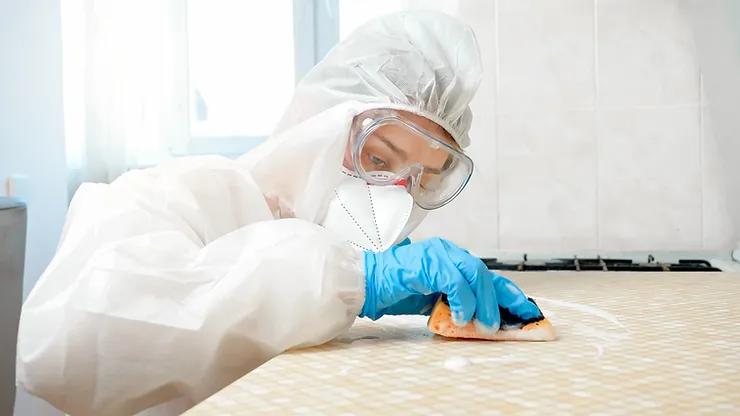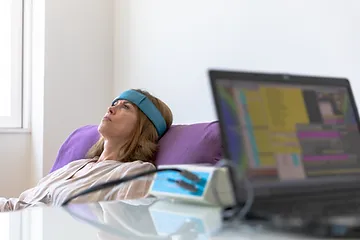A twelve-year-old girl is taken through a drive-through restaurant with her grandpa to get her food without ever exiting the vehicle. Upon arriving home, she runs straight to the bathroom with her mask still on and jumps in the shower with her clothes still on. While she removes her clothes she begins to furiously wash to remove any COVID-19 causing germs that may have been picked up; according to her grandmother.

Her grandmother retells this story in March of 2022 stating that it is a constant occurrence if she leaves the house. Her parents work separate jobs and have decided that it’s best she stays with her retired grandparents so that her COVID-19 risk is lessened by them not bringing anything home through the week. As long as the parents show no symptoms they will see her on the weekend if they don’t have to work.
This is a real-life example of COVID Anxiety Syndrome (CAS) that has affected an entire family and even friends as well as coworkers.
As lockdowns and restrictions relax in several locations globally as of this year, many people are finding it challenging to get back to “normal” life. Going back out and mingling with other people is a concept that’s causing an uptick in fear and anxiety. What it has done to a younger generation has instilled a heightened level of social fear; many school age children are struggling to get back into the swing of even going to school. The pandemic has wreaked havoc neurologically on the old and young alike.
Most of us were on high alert in the beginning, experiencing fear and worry over the impact this virus may have. However, researchers have noticed that people were developing a particular set of traits on a larger scale; traits that reflect the girl spoken about at the beginning of this article.
Despite the COVID threat level becoming less of a threat, some people are starting to experience what experts call COVID-19 anxiety syndrome (CAS).
Carly Snyder, MD says COVID-19 anxiety syndrome (CAS) is defined by the following :
- Compulsively checking for symptoms of Covid
- Avoidance of public places
- Obsessive cleaning
- Other maladaptive behaviors
Researchers are now concerned that obsessive distress and avoidance behaviors, such as being resistant to taking public transportation or bleaching your home for hours for example, will not subside quickly, even as COVID is controlled.

Symptoms of this syndrome imitate those of other mental health conditions, such as anxiety, post-traumatic stress disorder (PTSD), and obsessive-compulsive disorder (OCD).
Here are a few signs you or someone you know may be experiencing CAS and may benefit from additional support
- You have trouble thinking about anything other than COVID-19
- Your anxiety interferes in your daily life-like finding it difficult to go to school, work or to the grocery store, even with low risk
- You isolate yourself from other people when it isn’t necessary
- You feel hopeless or bitter about the pandemic
- You have trouble sleeping
- You experience unusual physical symptoms, such as frequent headaches or stomach aches
- It’s been noted that people with this anxiety syndrome experience increased post traumatic stress, generalized anxiety, depression and in some cases, suicidal ideation.
When Do Anxious Feelings Move Past "Normal"?
Researchers suggest that, for some, isolation, fear of contracting COVID-19, and uncertainty throughout the pandemic may have pointed to the group of symptoms that make up CAS.

They also suspect that neurological personality traits can play a role in its somewhat normalcy to, ‘spiraling out of control’. Those with a high level of neuroticism may possess a greater chance of developing CAS. In contrast, those who are highly extroverted, agreeable, and open may have a lower risk.
Additionally, those with obsessive-compulsive disorder may also be more at risk, as COVID-19 concerns may amplify the condition. Researchers expect there to be groups of people (vaccinated or not) continuously worrying about COVID and avoiding anything that may increase their risk. However, research is only in the early stages, and various complex factors need to be considered.
If you're worried that you may be struggling with CAS, ask yourself the following questions :
- Do my responses align with the potential risk or threat of danger?
- Do my loved ones express concern for my level of worry, fear, and avoidance?
- Am I obeying local guidelines to avoid exposing myself to COVID, like practicing social distancing, wearing masks, and washing my hands?
- Or do I go out of my way to avoid people and situations when it isn’t necessary?
- Although showing no symptoms, do you fear that being in contact with others you may pass COVID-19 germs onto other individuals in your home?
If you find that your anxiety levels do not match potential threats, it might be time to seek help from a professional. How can anxiety be dealt with safely without dosing an individual with powerful pharmaceuticals like Xanax, which can be highly addictive and also deadly? Biofeedback to the rescue!
What is biofeedback?
? Biofeedback training will help you identify and reduce anxiety rather than masking or numbing it with medication. Stress escalates anxiety as well as other disorders, and biofeedback trains you to keep those escalations down by learning to self-regulate.

biofeedback for anxiety
- Calms Nervous System
- Deepens Relaxation
- Slows Breathing
- Raises Low Energy
- Balances Brainwaves (neurofeedback) & Mood
If you feel that your symptoms of OVID anxiety syndrome are lasting longer than a couple of weeks, or have started interfering with your day-to-day life, consider how biofeedback training can help you…